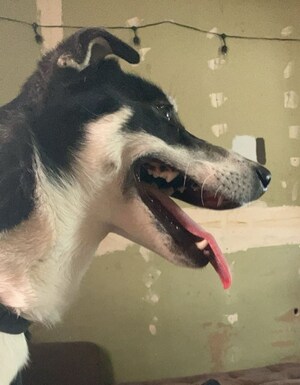New Interactive Tool Allows Pet Lovers to Research Potential Dangers in Their Area
MINNEAPOLIS, Sept. 14, 2022 /PRNewswire/ -- The toxicology experts at Pet Poison Helpline analyzed five years (2017-2022) of proprietary call data and have developed Toxin Trends, a new online tool designed to help consumers and veterinary professionals research dangerous and potentially poisonous plants in their local area.
"Over its 18 years in business, Pet Poison Helpline, your trusted source for pet toxicology advice, has developed an extensive database of poisoning cases based on emergency calls from pet owners and veterinary professionals in the United States and Canada," said Dr. Renee Schmid, a senior veterinary toxicologist at Pet Poison Helpline. "Our new Toxin Trends tool identifies the top 30 potentially dangerous plants to pets based on our last five years of call data and identifies where in the country pets are most at risk for that particular exposure."
For example, Toxin Trends visually illustrates that Arizona pets may be more at risk for oleander poisoning, while pets in Florida and other parts of the southeastern United States are more likely to be exposed to Sago palms. Calls regarding daffodil exposures are clustered in the northeast U.S. and Canada.
"It makes sense that coastal areas experience different types of pet poisonings than the Midwest or desert regions, but knowing which specific dangerous plants are in your region can better prepare you to protect your pet," added Dr. Schmid. "Visitors to Toxin Trends will not only see which plants have resulted in calls in their area, but they can also see if the exposure is more likely to happen to a dog, a cat or another type of pet."
The tool confirms that Peruvian lily exposures were overwhelmingly cats (96.1%), while exposures to lantana were predominantly dogs (96.1%). Meanwhile, calla lily exposures were split between cats (51.6%) and dogs (47.3).
The tool also allows visitors to drill down to which specific cities the calls originated from, and which months of the year had the highest call volumes. It also lists the common clinical signs for each exposure, such as emesis, lethargy, ataxia and more. There is also a section of frequently asked questions.
"Our goal with Toxin Trends is to make pet owners and veterinary professionals aware of the most common dangerous plants, and then identify which of those plants have resulted in emergency calls in their area," said Dr. Schmid. "It is a valuable tool for all pet lovers."
Pet Poison Helpline plans to release future iterations of the Toxin Trends dashboard that will highlight additional insights gleaned from the company's database of emergency calls. The goal of sharing this exclusive data is to save pets' lives and make the world safer for animals.
Pet Poison Helpline, your trusted source for toxicology and pet health advice in times of potential emergency, is available 24 hours, seven days a week for pet owners and veterinary professionals who require assistance treating a potentially poisoned pet. We are an independent, nationally recognized animal poison control center triple licensed by the Boards of Veterinary Medicine, Medicine and Pharmacy providing unmatched professional leadership and expertise. Our veterinarians and board-certified toxicologists provide treatment advice for poisoning cases of all species, including dogs, cats, birds, small mammals, large animals and exotic species. As the most cost-effective option for animal poison control care, Pet Poison Helpline's fee of $75 per incident includes follow-up consultations for the duration of the case. Based in Minneapolis, Pet Poison Helpline is available in North America by calling 800-213-6680. Additional information can be found online at www.petpoisonhelpline.com.
Contact: Dr. Renee Schmid
Pet Poison Helpline
(952) 806-3803
[email protected]
SOURCE Pet Poison Helpline

WANT YOUR COMPANY'S NEWS FEATURED ON PRNEWSWIRE.COM?
Newsrooms &
Influencers
Digital Media
Outlets
Journalists
Opted In






Share this article